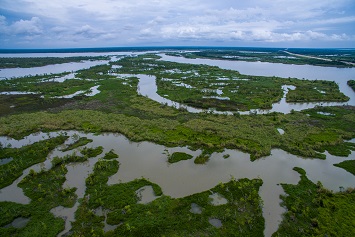In their just-released final rule, the EPA and Army Corps of Engineers (EPA/Corps) provide a definition of the Clean Water Act (CWA) term Waters of the United States (WOTUS) that, the agencies say, is based in the commerce clause of the Constitution.
“As a threshold matter, the power conferred on the agencies under the CWA to regulate the waters of the United States is grounded in Congress’ commerce power over navigation,” state the EPA/Corps. “The agencies can choose to regulate beyond waters more traditionally understood as navigable, including some tributaries and relatively permanent bodies of water connected to those traditional navigable waters, but the agencies must provide a reasonable basis grounded in the language and structure of the Act for determining the extent of jurisdiction.”
The result of that thinking is a definition that attempts to remove uncertainty some states and industry stakeholders claim was inherent in a 2015 WOTUS definition issued by the Obama administration. In that action, the EPA/Corps contended that states and stakeholders welcomed that definition to expand and give form to the brief and controversial definition of WOTUS Congress provided in the CWA. As the agencies now note, the legal implications of the congressional definition have been contested in hundreds of cases heard by dozens of federal courts, including at least three cases decided by the U.S. Supreme Court.
The new rule contains two main components.
Four Jurisdictional Categories
First, it outlines four “clear” categories of waters that are considered WOTUS and, therefore, jurisdictional under the CWA:
- Territorial seas and traditional navigable waters;
- Tributaries of such waters;
- Certain lakes, ponds, and impoundments of jurisdictional waters; and
- Wetlands adjacent to other jurisdictional waters (other than waters that are themselves wetlands).
Under this part of the rule, the EPA/Corps are eliminating the significant nexus test that was described by Justice Anthony Kennedy in a pivotal U.S. Supreme Court WOTUS ruling (Rapanos v. United States, 2006). The 2015 rule relied heavily on the significant nexus test to ensure that the WOTUS definition encompassed many nonnavigable waters that impact WOTUS. But the EPA/Corps now emphasize that in Rapanos the Court made it clear that the significant nexus test was necessary only in the absence of clear regulations, which the new rule provides.
Not WOTUS
Second, the new rule excludes 12 waters/features that are not WOTUS and, therefore, not CWA jurisdictional:
- Water bodies that are not included in the four WOTUS categories listed above;
- Groundwater, including groundwater drained through subsurface drainage systems, such as drains in agricultural lands;
- Ephemeral features, including ephemeral streams, swales, gullies, rills, and pools;
- Diffuse stormwater run-off and directional sheet flow over upland;
- Many farm and roadside ditches;
- Prior converted cropland;
- Artificially irrigated areas, including fields flooded for agricultural production, that would revert to upland should application of irrigation water to that area cease;
- Artificial lakes and ponds, including water storage reservoirs and farm, irrigation, stock watering, and log cleaning ponds, constructed or excavated in upland or in nonjurisdictional waters;
- Water-filled depressions constructed or excavated in upland or in nonjurisdictional waters incidental to mining or construction activity;
- Stormwater control features excavated or constructed in upland or in nonjurisdictional waters to convey, treat, infiltrate, or store stormwater runoff;
- Groundwater recharge, water reuse, and wastewater recycling structures, including detention, retention, and infiltration basins and ponds, that are constructed in upland or in nonjurisdictional waters; and
- Waste treatment systems have been excluded from the definition of WOTUS since 1979 and will continue to be excluded under the final rule.
State Sovereignty
Several of the exclusions listed above (e.g., groundwater, ephemeral features, and diffuse stormwater runoff and directional sheet flow) derive from the EPA/Corps’s belief that the 2015 rule “failed to adequately consider and accord due weight to the policy of the Congress in CWA section 101(b) to ‘recognize, preserve, and protect the primary responsibilities and rights of States to prevent, reduce, and eliminate pollution’ and ‘to plan the development and use … of land and water resources.’”
The EPA/Corps now say that under the new definition, states are in the better position to determine the regulatory status of nonnavigable waters and other artificial and geographical features that are excluded from the new definition.
“Depending on the value of a newly characterized non-jurisdictional water, States may or may not choose to regulate that water and the compliance costs and environmental benefits of its regulation could increase or decrease, respectively,” write the EPA/Corps. “In either case, however, net benefits would increase, assuming that a State can more efficiently allocate resources towards environmental protection due to local knowledge of amenities and constituent preferences.”
Not all states agree that the Obama-era rule violated the principle of federalism—the cooperative relationship between the federal government and the states. For example, one environmental group reports that 23 states continue to support the 2015 WOTUS definition.

